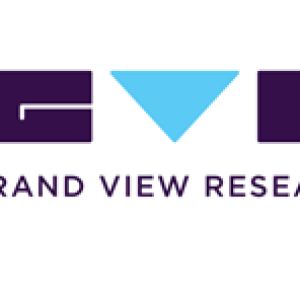In-line UV-vis Spectroscopy Market 2030: What Will Be Changes In Investment Ratio With Opportunity Analysis??Posted by Mrudula Anil Karmarkar on January 17th, 2023 The global in-line UV-vis spectroscopy market size is expected to reach USD 1.88 billion by 2030, registering a CAGR of 6.50% over the forecast period, according to a new report by Grand View Research, Inc. Notable technological advancements in the UV-vis spectroscopic method have accelerated the in-line monitoring of compounds using UV-vis-spectrometry across various fields, such as environmental monitoring, materials science, pharmaceutical research, and agriculture. The introduction of advanced solutions, such as enhanced silicon and InGaAs detectors & Light-emitting Diode (LED) sources, have supported the adoption of this UV-Vis spectroscopy technique, thereby driving the industry. UV/Visible spectrophotometers are widely used by laboratories, including that associated with academia and governments, as well as other industries. The introduction of multiple regulatory guidelines for effective approval and new product development processes across various industries, such as the pharmaceutical, food & beverages, and cosmetics industries, is anticipated to increase the adoption of products. In the pharmaceutical industry, the introduction of UV-Vis spectrophotometry that operates in compliance with United States Pharmacopeia (USP), Japanese Pharmacopoeia (JP), and the European Pharmacopoeia (EP) is anticipated to drive the industry. Internal quality management and external regulators play a crucial role in developing spectrophotometers in compliance with various established regulatory guidelines for the effective and safe use of instruments. Wavelength accuracy and repeatability are key performance parameters of the UV/VIS spectroscopic method. Thus, accurate calibration of the wavelength axis is important for applications that rely on spectroscopic techniques for compound testing, to receive regulatory approval. Furthermore, the National Institute of Standards and Technology is involved in establishing guidelines on technical specifications for the certification of spectrophotometric traceable Reference Materials. In addition, major manufacturers are providing solutions to academic institutions. For instance, in May 2021, PASCO Scientific announced the launch of a new UV-Vis spectrometer, which offers universities a comprehensive solution for everyday applications in spectrophotometry. The COVID-19 pandemic positively impactedindustry growth. Advantages, such as high accuracy, and characterization of components, such as additives/preservatives, proteins, and nucleic acids (i.e. DNA/RNA), among others will drive the demand. This technology can also impact the time-to-result for both upstream and downstream processes including quality control. As a result of these advantages, the usage of these technologies increased during the COVID-19 pandemic. The development in the advancement of biological drugs globally is leading to the expansion of several New Biological Entities (NBEs). To Request Sample Copy of this report, click the link: https://www.grandviewresearch.com/industry-analysis/in-line-uv-vis-spectroscopy-market/request/rs1 Before these NBEs are modified into therapeutics, the research laboratory must precisely characterize each product and should constantly examine the quality of these products through the development process. The In-line UV-Vis spectroscopy system also allows laboratories to make considerable gains in efficacy as it can run manifold experiments at the same time, allowing laboratories to obtain more results in a similar amount of time and it also extends the opportunity to design the experiments in ways, which have not been possible earlier. For instance, in October 2018, Agilent’s Cary 3500 UV-Vis spectroscopy was introduced, which is a significant tool that permits laboratories to do research accurately and more quickly. In-line UV-vis Spectroscopy Market Report Highlights
Out of all the molecular spectroscopy methods, Nuclear Magnetic Resonance (NMR) spectroscopy is considered the most widely adopted technology, with the majority of users from pharmaceuticals or academic research. In UV-Vis spectroscopy, sample preparation processes are slow and are often operator-dependent. On the other hand, they are relatively simpler in the case of NMR and IR spectroscopy. In addition, in NMR spectroscopy, samples can be recovered as the workflow is nondestructive. These factors have driven the use of other spectroscopy methods, thereby limiting the revenue growth in this industry. Moreover, UV-Vis spectroscopy exhibited challenges in isolating matrix interferences and inefficiency in molecular structure evaluation. These factors have impeded the industry growth to a considerable extent. Have a Query? Ask our experts: https://www.grandviewresearch.com/inquiry/6817/ibb Similarly, BIOTECanada is engaged in advancing the Canadian biotechnology sector, especially the agricultural, vaccines, and industrial biotechnology sectors. The manufacturers and other key stakeholders in the industry are also collaborating to explore the potential of in-line spectroscopic methods across various fields, thereby accelerating innovations in the in-line UV-vis spectroscopy industry. Furthermore, technological advancements in instrumentation and the increased need for food analysis that involves wide usage of these devices will further offer lucrative opportunities. UV/Vis spectroscopy is at present used to analyze a variety of significant vaccines including rabies and influenza. This technology also has significant advantages in the research for the COVID-19 vaccine. UV/Vis spectrophotometry in COVID-19 research provides an accurate, easy & fast characterization of components, such as additives/preservatives, proteins, and nucleic acids (i.e. DNA/RNA) among others. In-line UV-vis spectroscopy technology can also impact the time-to-result for both upstream and downstream processes including quality control. For instance, the METTLER TOLEDO UV/VIS Excellence spectrophotometers UV5Bio and UV5Nano are vital tools for obtaining reliable and accurate quantification and can be an effective tool in vaccine research during development and synthesis. Moreover, they can also provide purity checks for upstream processes, downstream processes, and quality control. List of Key Players of In-line UV-vis Spectroscopy Market
Like it? Share it!More by this author |


